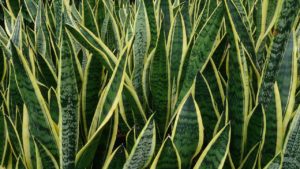Worried About Indoor Air Quality? Houseplants Can Help!
HVAC and Houseplants Go Together to Promote Healthy Indoor Living

Of course you’ve read it here: there are several important things you should do regularly to improve the air quality inside your home.
Changing your air filters every three to six months, for example, makes a huge difference when it comes to ensuring the air inside your home is clean and fresh. Using a HEPA rated vacuum cleaner weekly is also a “must-do” for removing dust, debris and allergens from your home. Finally, scheduling a yearly maintenance appointment for your heating and air conditioning system is imperative to assess HVAC problems and prevent future ones from developing.
So, you say, you do all that. What next?
Have you considered houseplants? Research from the NASA Clean Air Study, led by the space agency in partnership with the Associated Landscape Contractors of America, determined that certain species of indoor plants can neutralize the consequences of “sick building syndrome.” Indeed, these houseplants were shown to actually remove toxic pollutants, including benzene, formaldehyde and trichloroethylene, from the air inside your home or office.
Scientists interested in how to clean the air inside a space station found that air cleaning is best accomplished with one or more plants per 100 feet of indoor space. Moreover, while the initial study was limited to only the effects of hydroponically grown plants, more recent findings uncovered that the potting soil for conventionally grown indoor plants is also helpful. This soil is host to microorganisms that in turn contribute to the removal of dangerous chemicals and pollutants from the air.
Remember, most people spend up to 90% of their time inside. Given that poor quality indoor air has been identified as a leading environmental risk, everyone should consider at least one plant from this list for their home or office.
Ficus/Weeping Fig:
Originally found in Southeast Asia, this leafy wonder has been demonstrated to remove trichloroethylene, as well as benzene and formaldehyde. Hardy and often growing up to ten feet tall, ficus are also extremely low maintenance. Grow in bright, indirect sunlight, and allow its soil to dry out between waterings.
Mother-In-Law’s-Tongue:
When it comes to its popular name, what does it mean that the Mother-In-Law’s-Tongue plant is pretty much indestructible? Water infrequently, and allow it plenty of indoor sunshine to flourish. This species is an expert at removing “the big three” (trichloroethylene, benzene and formaldehyde), as well as xylene.
Dracaena:
With all kinds of colorful varieties available ranging from all green to striped with cream or red, this indoor palm is extremely easy to grow and one of Southern California’s most popular indoor plants. It’s also a reliable air cleaner, as it removes just about every common toxic pollutant there is from your indoor air. Let the soil dry out between waterings, and allow it to receive plenty of sunshine. Caution for those who own pets, however: this plant can be toxic to dogs and cats.
Along with this short list, there are others to consider: Boston Fern, Spider Plant, Aloe Vera and Bamboo Palm have all been shown to be effective against harmful pollutants indoors. They make great holiday gifts, too.
Need information on the best ways to combat allergens, pollutants and other indoor air quality problems? Call Air-Tro today. We’ve been keeping California comfortable since 1969! (626) 357-3535.
